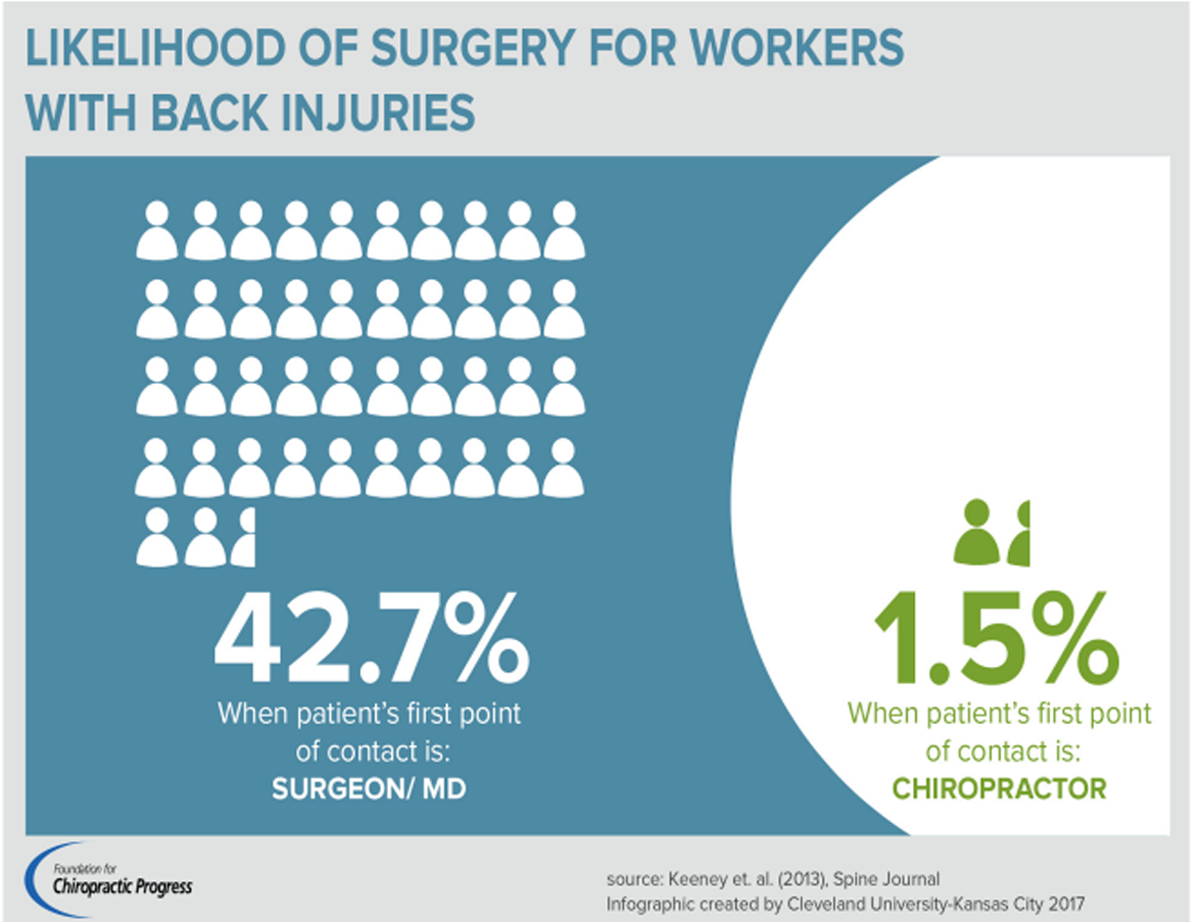

Chiropractic Cost-Effectiveness Review (2009) This section is compiled by Frank M. Painter, D.C.
Send all comments or additions to: Frankp@chiro.org




Anthony L. Rosner, Ph.D., LL.D.[Hon.], LLC

FROM: Keeney ~ Spine 2013 (May 15)
Healthcare expenditures:
In terms of spine care, annual expenditures rose 65% from 1997 to 2005 while the health status of individuals with spine problems failed to improve. This means that the money invested in this pursuit was not returning a sufficient value. [1]
According to the 1998 Medical Expenditure Survey, total healthcare expenditures for back pain were $90.7B, more than 15% of which represented the costs of prescription drugs. [2]
Chiropractic and medical expenditures:
80% of the total cost of chiropractic treatment is billed from the chiropractor, whereas only 20% of the total medical costs of treatment appear on bills directly from the medical physician. [3] This is of paramount importance in accurately calculating the relative costs of chiropractic and medical treatment.
With an accurate assessment of case mix severity, demographics, and what constitutes an episode, Stano demonstrated from a large insurers’ database that the mean total costs were $1000 for each medical episode and $493 for each chiropractic episode. [4]
If chiropractors were admitted into an integrative service as gatekeepers in an Independent Physicians’ Association (IPA), hospital admissions were reduced by 43% and hospital days were cut by 58% with the average length of stay reduced by 34% over a 4-year period. These costs were compared to those of conventional health maintenance organizations which had not awarded primary care privileges to chiropractors. [5]
A 4-year retrospective claim analysis of another insurance plan revealed major savings for health plan members who held an additional chiropractic coverage benefit.
This resulted in(a) lower total healthcare expenditures ($1,463 vs $1,671),
(b) lower average back pain episode-related costs for
back pain patients ($289 vs $399),
(c) a reduction of claims through medical doctors, and
(d) lower utilizations of plain radiographs, magnetic resonance imaging,
back surgeries, and hospitalizations.The savings were even greater than those reported because all pharmacy costs, costs of physical therapy upon referral, and post-surgical patients were omitted. [6]
A recent Medicare study comparing the costs to beneficiaries treated by chiropractors to recipients of other types of healthcare revealed major savings. These who received chiropractic care had average Medicare payments per capita for all Medicare services was $4,426, compared to $8,103 for those lacking such care. [7]
Workers’ Compensation Studies:
According to records of workers’ compensation disbursements to medical and chiropractic physicians, and physical therapists in the state of Georgia from 2006-2009 for back pain in workers compensation cases, chiropractors received 2% or less of the funds paid to medical physicians and just 1.4-11.7% of the disbursements paid to physical therapists. [8]
Data from the Division of Workers’ Compensation Claims in Florida revealed significant savings when chiropractic was compared to non-chiropractic care for specific low back injuries during the period 1994-1999. Total claims were less than half for chiropractic care [$7,500 vs $16,500) and the average number of days required to return to work was reduced by 30% (77 vs 130). [9]
Workers’ Compensation claims in Texas from 1996-2001 revealed that chiropractors treated 30% of workers with lower back injuries but accounted for just 9.1% of the total costs, 17.5% of medical costs. [10]
References:
Deyo RA, Mirza SK, Turner JA, Martin BI, MPH.
Overtreating Chronic Back Pain: Time to Back Off?
Journal of the American Board of Family Medicine 2009 (Jan); 22 (1): 62–68Luo X, Pietrobon R, Sun SX, Liu GG, Hey L.
Estimates and Patterns of Direct Health Care Expenditures
Among Individuals With Back Pain in the United States
Spine (Phila Pa 1976) 2004 (Jan 1); 29 (1): 79–86Manga P.
Economic Case for the Integration of Chiropractic
Services into the Health Care System
Journal of Manipulative and Physiological Therapeutics 2000 (Feb); 23 (2): 118–122Stano M.
The Economic Role of Chiropractic:
Further Analysis of Relative Insurance Costs for Low Back Care
Journal of the Neuromusculoskeletal System 1995; 3(3): 139-144Sarnat, RL and Winterstein, J.
Clinical and Cost Outcomes of an Integrative Medicine IPA
J Manipulative Physiol Ther 2004 (Jun); 27 (5): 336–347Legorreta, AP, Metz, RD, Nelson, CF, Ray, S, Chernicoff, HO, and Dinubile, NA.
Comparative Analysis of Individuals With and Without Chiropractic Coverage:
Patient Characteristics, Utilization, and Costs
Archives of Internal Medicine 2004 (Oct 11); 164 (18): 1985–1892Muse & Associates.
Utilization, Cost, and Effects of Chiropractic Care
on Medicare Program Costs
Washington, DC, July 2001Georgia State Board of Workers' Compensation
http://sbwc.georgia.gov/portal/site/SBWC/menuitem.2f54fa407984c51e93f35eead03036a0/
?vgnextoid=e8b934a359b45210VgnVCM100000bf01020aRCRDFolsom BL, Holloway RW.
Chiropractic care of Florida workers' compensation claimants:
Access, costs and administrative outcome trends from 1994 to 1999.
Topics in Clinical Chiropractic 2002; 9(4): 33-53MGT of America.
Chiropractic Treatment of Workers' Compensation Claimants in the State of Texas
Final report submitted to the Texas Chiropractic Association, February 2003.
Return to COST-EFFECTIVENESS
Since 4–28–2016


| Home Page | Visit Our Sponsors | Become a Sponsor |
Please read our DISCLAIMER |